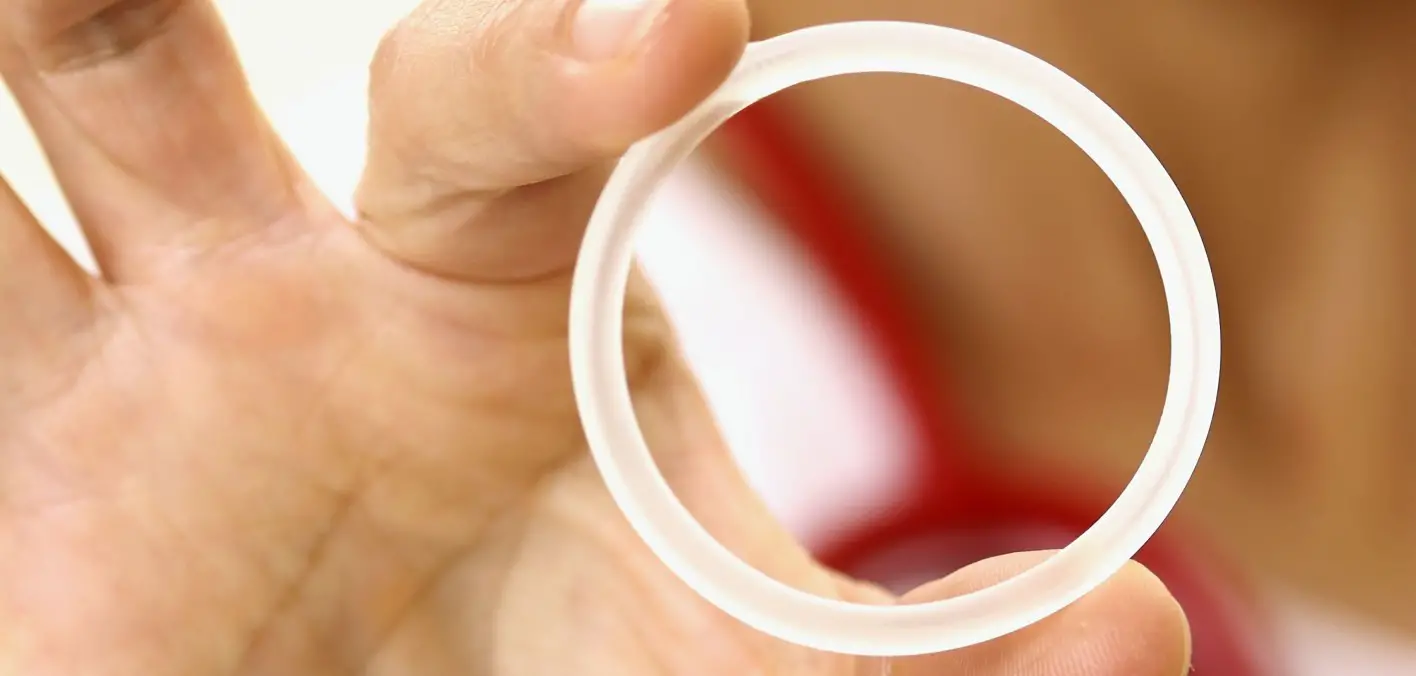A method of contraception without pills or an IUD
- Vaginal heat reflexThis method depends on measuring the woman’s basal body temperature every morning using a specialized thermometer.
After temperature changes occur, the woman should avoid intercourse until after normal vaginal reflex is restored. - Preventing pregnancy with the natural cycleThis method involves following the woman’s natural cycle, identifying fertile days, and avoiding sexual intercourse during these days.
Natural method charts can be used to help women determine their fertile periods. - Vaginal septum: Vaginal contraceptives are used as an effective method of contraception.
These include internal or external sites such as condoms, uterine cap, or uterine sponge. - Other self-administered birth control methods: Includes innovative birth control methods such as menstrual control and hormone balancing.
After consulting with a doctor, these methods may be suitable for some women.
How long does the contraceptive needle last for men?
It can be noted that the contraceptive needle contains hormones that inhibit sperm production in the body.
When a man is injected with a contraceptive needle, this reduces the secretion of hormones that contribute to sperm formation.
Usually, the contraceptive needle is injected once every month or every three months.
However, you should be aware that results may vary from one person to another, as it may take some people longer to regain the ability to conceive after stopping the use of the contraceptive needle.
| the problem | Lack of information about the duration of effectiveness of the contraceptive needle for men |
| the reasons | 1. Not conducting complete research. 2. Manufacturers do not disclose sufficient information. |
| procedures | Consult your doctor or treating specialist to obtain accurate and comprehensive information. |

Does cinnamon help prevent pregnancy?
There is no strong scientific evidence to prove that cinnamon can be an effective alternative to usual contraceptive methods such as birth control pills or condoms.
If you intend to organize a family plan or prevent pregnancy, it is best to consult with a specialist doctor who will be able to provide the best suitable and safe options based on your individual health conditions.
Although cinnamon is usually safe to use in cooking and seasoning, precautions should be taken when using it for the purpose of preventing pregnancy, especially for women who are pregnant or have hormonal disorders or other health problems.
What are spermicides and how effective are they in preventing pregnancy?
Spermicides have aroused great interest in the medical and scientific community.
Spermicides are products used to prevent pregnancy by inhibiting sperm motility and affecting male fertility.
These pesticides are considered one of the most prominent contraceptive options for men and are considered an attractive alternative to sterilization and other methods of contraception.
There are many spermicides available in the market and are widely used in many countries.
These spermicides include oral medications, patches, injections, and creams, and the ways they are used vary from product to product.
However, it should be noted that the effectiveness of spermicides in preventing pregnancy varies from person to person and depends on many factors.
For example, incorrect or irregular use of spermicides may result in less success in preventing pregnancy, while some people may have a more effective response to these products.
| Type of pesticide | How to use |
|---|---|
| Oral medications | Swallow doses |
| Adhesive tapes | Apply it to the skin |
| injection | Inject the product under the skin |
| creams | Apply the product to the skin |

Does the cervical cap prevent pregnancy?
The cervical cap, also known as the “diagram”, is a small device that is placed inside the uterus to prevent sperm from reaching the egg and thus preventing pregnancy.
This device is usually made of a flexible material similar to silicone or nylon.
It is important to note that the cervical cap not only prevents pregnancy, but is also used as a preventive measure to reduce the transmission of sexually transmitted diseases and uterine infections, which makes it an effective solution for many women.
Although the cervical cap is effective in preventing pregnancy, it should be noted that it is not a 100% proven method of contraception.
Improper use or lack of adherence to instructions for use can lead to unwanted pregnancy.
Therefore, it is necessary to consult a specialist doctor before using this device and clarify whether it is suitable for the specific needs of the woman.
The cervical cap is one of many contraceptive methods available to women today.
Therefore, women should seek correct and accurate information before making any decision about using this device or any other method of contraception.
Benefits of the contraceptive patch
- High effectiveness in preventing pregnancy: The contraceptive patch is considered one of the most effective methods of contraception, as it allows women to better control and determine family planning.
Thanks to its hormones, the patch works to stabilize the eggs and prevent the formation of pregnancy. - Ease of use: The contraceptive patch comes in different forms, but they are all easy to use and painless.
It is stuck to the skin and left for a period of time that may reach 7 days, depending on the type of patch.
Women can also remove them easily at any time. - Does not affect the sexual process: The contraceptive patch works in the background, and therefore does not affect the sexual sensation of the couple.
This allows couples to enjoy their sexual lives freely and confidently. - Improvement of menstrual cycle: The patch also improves women's menstrual cycle.
They reduce ulcer symptoms, pain and excess bleeding caused by hormonal disorders. - Easy availability and cost: The contraceptive patch can be easily obtained in pharmacies and medical clinics, and it is an affordable method of contraception for many women.
Does staying away from ovulation days help prevent pregnancy?
Preventing pregnancy is important for many couples and individuals seeking family planning.
In addition to traditional contraceptive methods such as hormonal contraceptives and frequent tests, there are some methods that can be used to achieve similar results.
One of these methods is to avoid ovulation days.
While research suggests that staying away from ovulation days may reduce your chances of pregnancy, it is not as effective as other methods of contraception.
This is because the timing of ovulation may vary from one woman to another and from one month to another.
Therefore, it may be difficult to determine the correct days to take a break from intimacy.
However, if you prefer to take this approach to contraception, you can use a calendar to track changes in your menstrual cycle and try to determine which days you ovulate.
Ovulation usually occurs in the middle of the menstrual cycle.
After that, you can stay away from intimate relations on those days as much as possible to reduce the chances of pregnancy.

Does cleaning the vagina after sexual intercourse prevent pregnancy?
The vagina has its own natural ways of cleaning itself and maintaining its health.
The self-cleaning process may help remove excess fluids and mucus, enhancing comfort and overall health of the sensitive area.
However, if you feel the need to clean up after sex, it is important to be careful.
Using lukewarm water and gentle soap is a safe option in most cases.
It is recommended to avoid using harsh or scented chemical products, as they can cause irritation and disrupt the natural balance of the vagina.
But most importantly, you should know that cleaning the vagina after sexual intercourse does not protect you from pregnancy.
If you want to avoid pregnancy, it is best to consult your doctor about using an effective and safe method of contraception, such as medically approved contraceptives.
| the question | the answer |
|---|---|
| Does cleaning the vagina after sexual intercourse prevent pregnancy? | No, there is no scientific evidence to prove that cleaning the vagina after intercourse effectively prevents pregnancy. |
| What are the safe cleaning methods after sexual intercourse? | Using lukewarm water and gentle soap is a safe option in most cases. The use of harsh chemicals should be avoided. |
| What is the next step to prevent pregnancy after marital intercourse? | It is best to consult your doctor about using an effective and safe method of contraception. |
What is the appropriate time for sexual intercourse without pregnancy?
If you ask a couple what is the right time to have sex without getting pregnant, it is best to refer to the different contraceptive methods available.
Among these well-known methods we mention: condoms, oral contraceptive drugs, IUDs, and contraceptive injections.
These methods, in addition to traditional methods such as the calendar, monitor the most appropriate way to control timing and avoid the possibility of pregnancy.
Moreover, experts stress the importance of knowing the ovulation period and body temperature changes in a woman in determining the ideal time to have sex without pregnancy.
In the period before ovulation, the probability of pregnancy increases due to the ability of sperm to remain in the uterus, while the period after ovulation is the most fertile and the probability of pregnancy increases.
To identify the ovulation period and changes in temperature, using ovulation tests and smartphone applications specialized in tracking the menstrual cycle are effective ways to determine the appropriate time to have sex without pregnancy.
| Subject | Pregnancy and safe sex |
|---|---|
| Different methods of contraception | Condoms, oral drugs, IUDs, contraceptive injections |
| Use ovulation tests and smartphone applications | Checking the ovulation period and determining the appropriate time to have sex without getting pregnant |
| Consult the specialist doctor | Consult a doctor regarding the appropriate and most effective methods of contraception |
| Build a healthy and open relationship | Understanding each other's needs and providing comfort between both partners |
